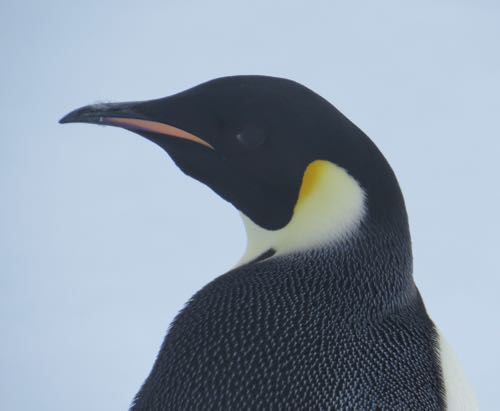 This guy turned to look at us and I couldn't resist the shot! Emperor penguins are magnificent!
This guy turned to look at us and I couldn't resist the shot! Emperor penguins are magnificent!
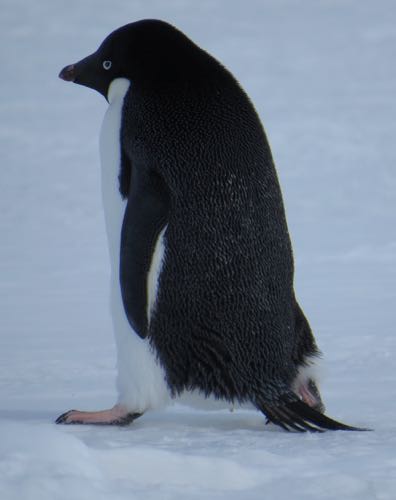 I think he might be headed to a party… he's got a tux on!
I think he might be headed to a party… he's got a tux on!
Finally, it happened. I saw penguins today and not just one, but a sum total of 12 and in both varieties that inhabit this area. It was fantastic. Shout out to Elaine Hood, who, on her only day off, took us out in frigid temps on the snowmobiles this morning and spent four hours with us on the ice!
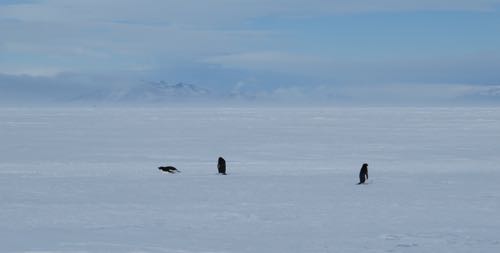 A group of three Adélie penguins – the first penguins we encountered in Antarctica. A sight that will remain with me forever!
A group of three Adélie penguins – the first penguins we encountered in Antarctica. A sight that will remain with me forever!
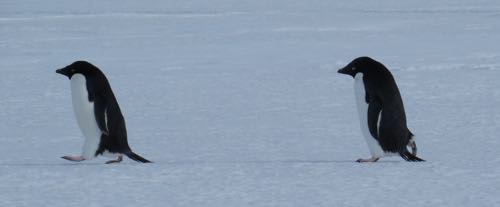 Two little penguins go by.
Two little penguins go by.
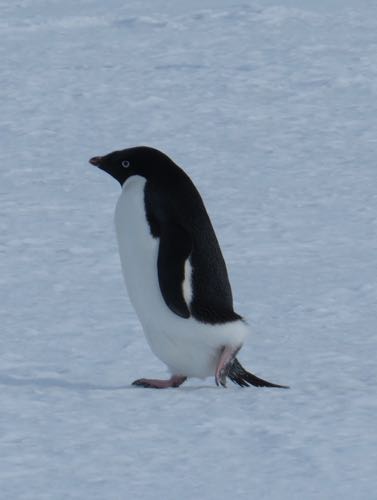 One Adélie penguin waddles by.
One Adélie penguin waddles by.
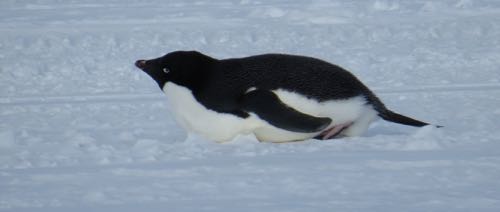 This little guy decided to scoot on his belly!
This little guy decided to scoot on his belly!
The two species that are found in the McMurdo area are the Emperor and Adélie penguins. Our first sighting was on our journey leaving McMurdo "town". We encountered three Adélie penguins and they were tremendously cute. I thought for sure that would be it for the day, but much to my surprise, on our journey home there were nine Emperor penguins hanging out fairly close to the snowmobile road. We stopped and started taking pics. They were curious and would come so close to us. I could almost reach out and touch them, not that I would have, but that is how close they came. They were truly magnificent to watch. I hope you enjoy the video below. Despite not having finished our work yet and not having gone up in the Rosetta Icepod flights to date, if I had to go home tomorrow, I would leave a very satisfied and happy science teacher.
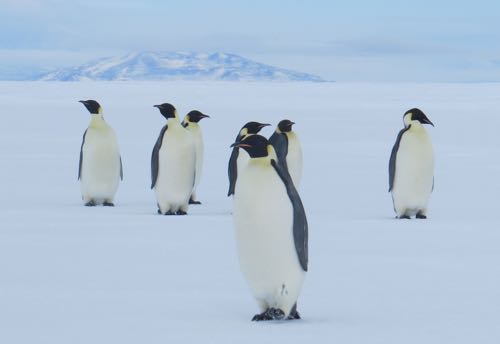 The Emperors are looking dapper!
The Emperors are looking dapper!
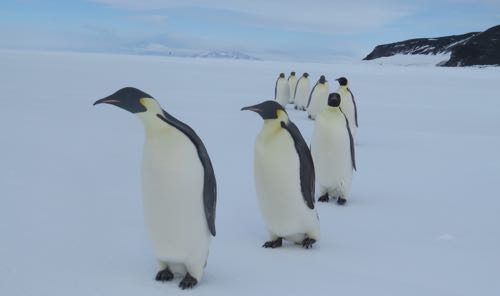 They lined up like this all on their own! They might be better behaved than students!
They lined up like this all on their own! They might be better behaved than students!
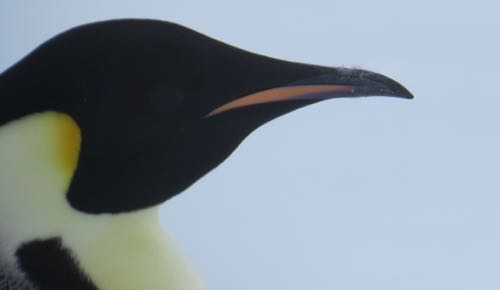 Close-up shot of the beautiful colors on this penguin.
Close-up shot of the beautiful colors on this penguin.
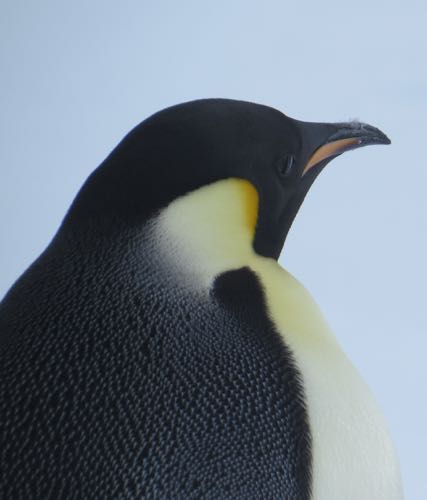 The feather texture is so interesting. Love this shot. You can make out some feathers caught on his/her beak!
The feather texture is so interesting. Love this shot. You can make out some feathers caught on his/her beak!
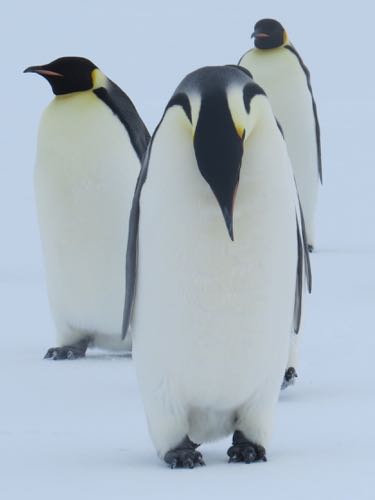 Love it when they put their heads down.
Love it when they put their heads down.
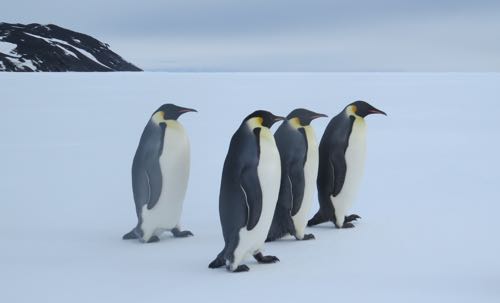 Penguin in the back seems a bit snowy. I think he got a lot of wind today!
Penguin in the back seems a bit snowy. I think he got a lot of wind today!
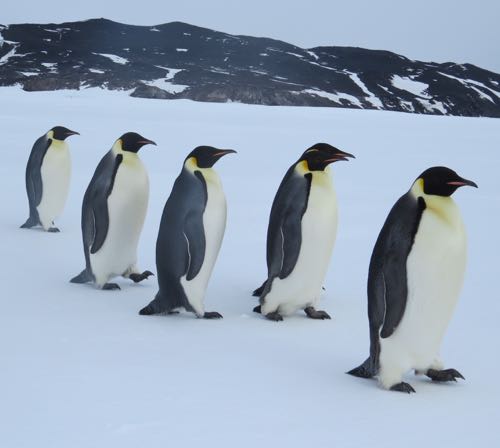 These guys walked so close to us!
These guys walked so close to us!
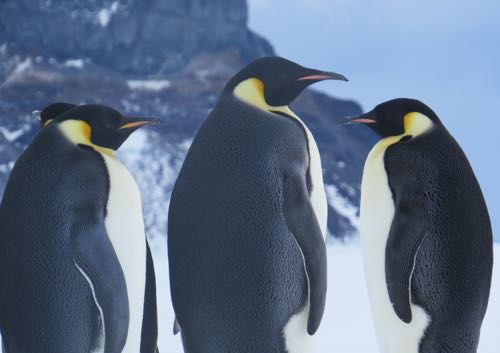 They truly are emperors of the ice! So majestic in their black and white suits and tall stature.
They truly are emperors of the ice! So majestic in their black and white suits and tall stature.
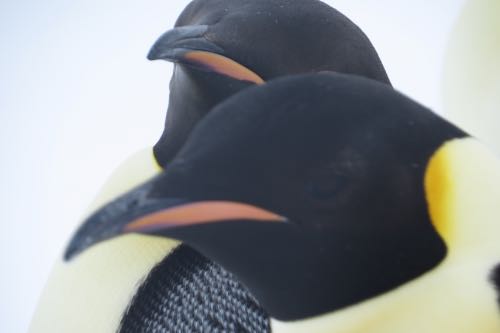 Another close-up head shot. Hard to see their eyes.
Another close-up head shot. Hard to see their eyes.
There are several groups doing penguin research at McMurdo. One group has been coming annually for many years and has their very own "teacher" with them permanently for their outreach. Jean Pennycook first came to Antarctica as a teacher (before PolarTREC was PolarTREC) with a team of scientists researching Mt. Erebus. Jean so enjoyed her experience she managed to find a team of penguin researchers in need of outreach and volunteered her services. She has been coming every year since and leads their outreach at www.penguinscience.com. She also does real time, live Skype sessions with classrooms by request. Originally from California, her school, where she taught science, allowed her to travel here each year for a few years, but eventually, her absence from the classroom led her to retire early and continue her outreach with the penguin group. She currently is based out of Cape Royds, a makeshift "deep" camp that one can only get to by helicopter. She lives in a tent while at the site and is there for 2-3 weeks at a time. It is here that a colony of Adélie penguins make their home. You can check out the web cam from the site and also take part in citizen science through this site as well. Jean has been an inspiration and I feel very lucky to have met her.
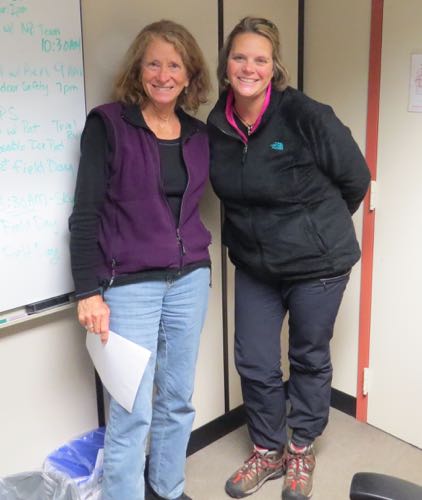 Jean Pennycook and I pose for a picture before she heads out for her field camp at Cape Royds. The photo was taken by Hongjie Xie.
Jean Pennycook and I pose for a picture before she heads out for her field camp at Cape Royds. The photo was taken by Hongjie Xie.
So much research on penguins is taking place here. I went around the Crary Lab and took photos of the posters hanging up that are based on this research. Some of these projects are ongoing and several new ones exist too!
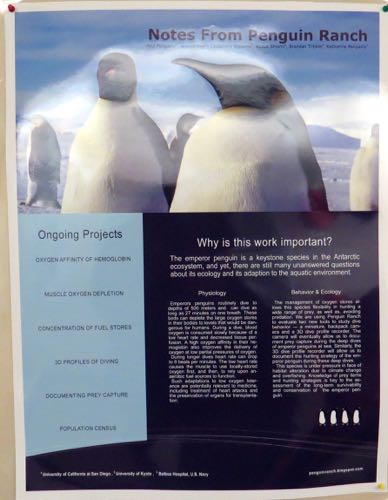 Penguin Ranch Research poster hanging in Crary.
Penguin Ranch Research poster hanging in Crary.
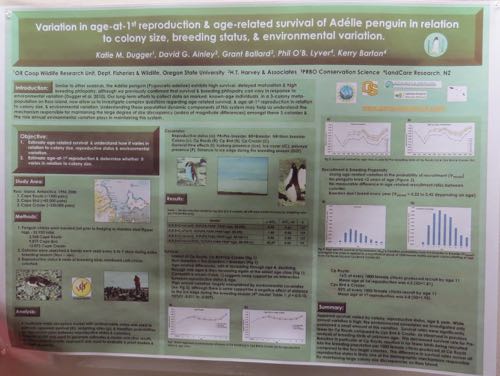 Another poster on penguin research. The hall is full of them!
Another poster on penguin research. The hall is full of them!
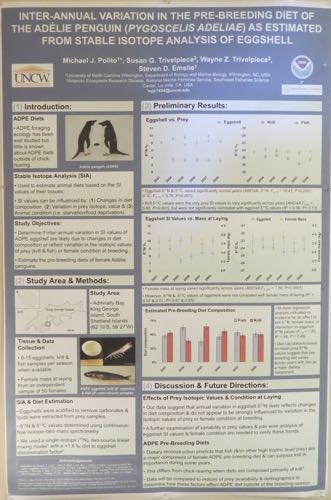 This poster is on the Adélie penguin research.
This poster is on the Adélie penguin research.
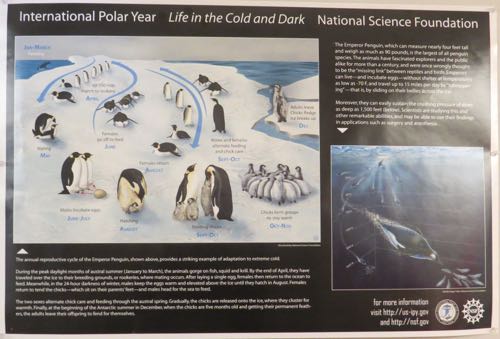 This poster was put out by NSF to be used in educational facilities.
This poster was put out by NSF to be used in educational facilities.
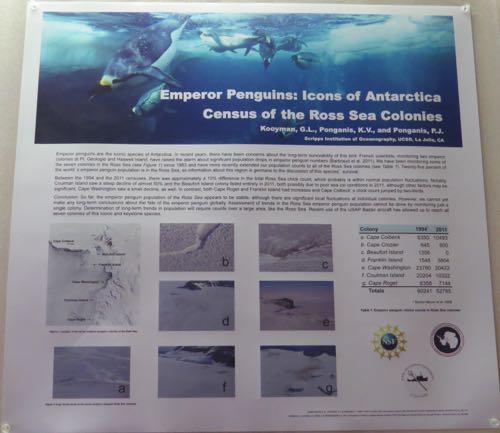 One last poster on Emperors. So much research devoted to these guys. I love it!
One last poster on Emperors. So much research devoted to these guys. I love it!
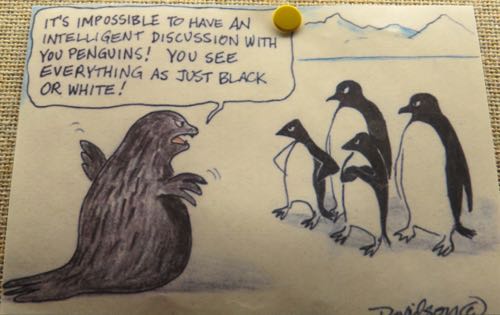 Comic found in Crary on the bulletin board, hand drawn by an artist who came to visit no doubt!
Comic found in Crary on the bulletin board, hand drawn by an artist who came to visit no doubt!
Today's flat Lorax was also very excited to finally see the penguins and dressed up accordingly! This card is for Hunter, a sophomore at Grafton High School!
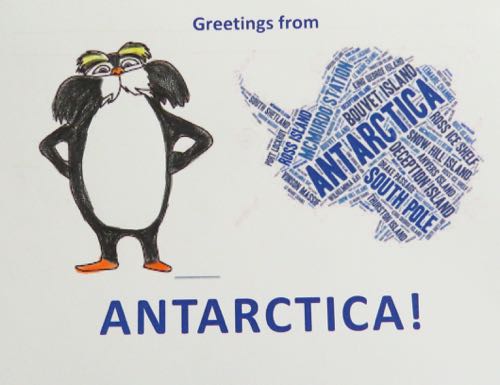 Flat Lorax postcards for Hunter at Grafton High School, a soon to be APES student!
Flat Lorax postcards for Hunter at Grafton High School, a soon to be APES student!

Comments
Add new comment